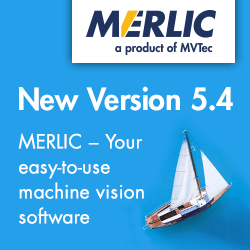Smart buildings are often moving the wrong way, with more central “cloud-based” decision making, and less autonomy.
A Rosy View of Smart Buildings
Toby Considine | TC9 Inc
I feel I must be one of the last people to discover the open source Robotic Operating Systems (RoS). RoS has been in development for nearly a decade; its open source release was in 2005. RoS is a framework for service oriented robotics, in which the services are typically higher order requests and the detailed performance of that action is managed locally. RoS integration naturally extends both up and down. The RoS model simplifies to cloud integration of the Internet of Things reducing the need for real-time sensing and real-time response. The RoS model extends down into smaller and smaller sub-systems offering both off-the-shelf applications or specialized interaction and performance without top-level re-crafting.
ROS is more of a framework than an operating system. The framework could be atop any operating system. In practice, for now, it is on Linux. (There are some interesting DotNet / Mono extensions, but those appear incomplete). ROS is providing the base for open source robotics, and the effect of robotics on all our lives will expand because of it.
ROS engages my imagination because it is inherently distributed. “Service Oriented Robotics” as a phrase that is used. Replacing the step-by-step commands that have ruled robotic manufacturing, ROS developers aim at tasks such as “Go upstairs, go to my room, find my stapler on my desk, and bring it back”. This must be decoupled into applications for climbing stairs, navigating a floor plan, identifying a stapler, and picking that stapler up.
Just as smart energy looks to fractal dis-assembling of power grids, ROS looks to fractal dis-assembly of robotic tasks. There are multiple ROS services for a robotic hand, decoupling the technology and the mechanics from the request. As ROS-capable systems get smaller and cheaper, there will likely be ROS applications for each knuckle on a hand. A ROS-enabled knuckle can more easily incorporate advanced features such as haptic feedback leading to a “gentle touch”. Gentle touch and heavy lifting can be different limbs responding to the same command.
The counterpart to fractal disassembly is recursive aggregation. Any RoS systems can themselves be managed by larger RoS systems. One can imagine swarms of robots directed centrally, each able to make the local decisions to avoid colliding with each other.
Robotics started out with fixed activities under direct control. In the larger systems, one can still see the single control even as they grow more autonomous. The future is distributed service oriented robotics.
We see a similar progression in smart energy. Smart grids started with transmission of planned sequences to control transmission. It evolved into fixed sequences to control energy consumption, centrally operated, by OpenADR 1.0 and by EnerNOC and by Constellation. It is slowly evolving into centrally orchestrated DR services, with local decision-making of how to use less energy, typified by OpenADR 2.0c, or even power buy-backs, as in Transactive Energy.
Smart buildings are often moving the wrong way, with more central “cloud-based” decision making, and less autonomy. More mature and agile systems will reverse this, incorporating more decision making into the local system. The DOE Voltron effort is a nudge in this direction. The agents of the Energy Mashup Lab will take us further.
Even Microgrids are today often simply the old architecture, and the old protocols, but just a little bit of isolation. Duke is pushing microgrids barely distinguishable from their distribution networks. Oncor salutes service orientation while extending the old technologies. The real advances are among those building those “smart hands”, autonomous microgrids that make their own decisions and technology choices. Eventually, just as in the smart knuckles, the same service orientations will arrive in the end appliances and systems of the end nodes.
Robotics is outside of my wheel-house. Service enabling of the internet of things is in. Service oriented energy is in. Clean Spark’s Fractal microgrids, and the recursive aggregation described by the Galvin Initiative seem natural, and they will have their decision-making local, where they can respond to the needs of site, and the owner, and the situation.
When I was young, in my Dinosaur age, I was fascinated by the Stegosaurus, and its hind-brain bigger than its fore-brain. That was settled science then, although controversial now. I enjoyed imagining a slow placid creature able to defend itself with some nimble, precise tail-bludgeoning.
The microgrids of the future will leverage distributed energy and local storage too, for some precise tail-bludgeoning in the smart building—the far away head will not even be sure what is going on.
Reprinted with permission from AutomatedBuildings.com
The content & opinions in this article are the author’s and do not necessarily represent the views of RoboticsTomorrow
Comments (0)
This post does not have any comments. Be the first to leave a comment below.
Featured Product

